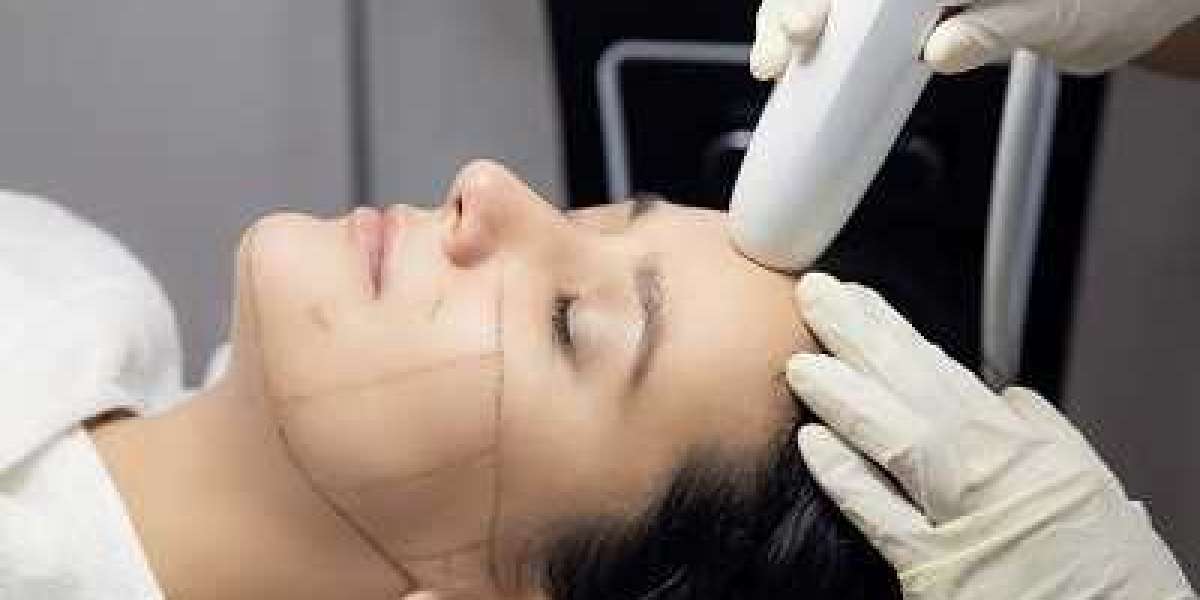High-Intensity Focused Ultrasound (HIFU) has become an increasingly popular choice for non-invasive skin tightening and rejuvenation. Known for its ability to lift and tighten the skin, reduce the appearance of wrinkles, and stimulate collagen production, HIFU has gained widespread attention as a non-surgical alternative to facelift procedures. However, as with any cosmetic treatment, it's essential to understand the potential side effects before deciding whether HIFU is the right option for you.
While HIFU is generally considered safe and well-tolerated, there are some side effects that may occur. In this blog, we will delve into the most common side effects of HIFU treatment in Islamabad, their causes, and how they can be managed.
1. Redness and Swelling
One of the most common side effects of HIFU treatment is temporary redness and swelling in the treated area. This occurs due to the ultrasound energy delivered to the skin, which stimulates blood flow and increases circulation in the treated areas. Redness typically appears immediately after the procedure and usually fades within a few hours.
Swelling, on the other hand, can last a bit longer. Mild swelling may persist for a day or two, but it typically resolves on its own. This side effect is temporary and generally not a cause for concern. Most patients can return to their daily activities without significant disruptions.
How to manage:
- Applying a cool compress to the treated area can help reduce swelling.
- Gently massaging the area may also help alleviate any discomfort.
- Avoid applying makeup immediately after the treatment to prevent irritation.
2. Mild Tenderness or Sensitivity
After a HIFU session, some patients may experience mild tenderness or sensitivity in the treated area. This is due to the heat generated by the ultrasound energy, which can cause a slight inflammatory response in the skin. Tenderness is generally mild and should subside within a few hours to a day after the procedure.
While it is rare for the tenderness to persist beyond a couple of days, some individuals may experience increased sensitivity in the treated areas for a longer period, depending on their skin type and sensitivity.
How to manage:
- Avoid massaging or applying pressure to the treated area during the healing process.
- If tenderness persists or is bothersome, over-the-counter pain relief such as ibuprofen or acetaminophen can help reduce discomfort.
3. Numbness or Tingling Sensation
Some patients report feeling a slight numbness or tingling sensation in the treated area after a HIFU treatment. This is usually temporary and happens due to the heat generated during the procedure. The tingling sensation may last anywhere from a few hours to a few days. In rare cases, the sensation can last longer but typically resolves on its own as the skin heals.
While the tingling sensation is a normal part of the healing process, it can be uncomfortable for some individuals. The intensity of this side effect can vary from person to person.
How to manage:
- Keep the treated area moisturized to alleviate any discomfort.
- If the tingling is bothersome, try applying a cool compress or an over-the-counter soothing gel to the area.
4. Bruising
Although bruising is a rare side effect of HIFU, it can occur in some individuals. Bruising typically happens when the ultrasound energy causes small blood vessels beneath the skin to break. This can lead to discoloration in the treated area, although the bruising is usually mild and fades within a few days to a week.
Patients with sensitive skin or those who take blood-thinning medications may be more prone to bruising. However, the bruising is typically not severe and does not cause long-term harm.
How to manage:
- Apply ice or cold compresses to the affected area to reduce the risk of bruising.
- Keep the treated area elevated (if possible) to minimize swelling and bruising.
- Avoid strenuous exercise or activities that may exacerbate bruising for a few days after treatment.
5. Skin Burns (Rare)
In very rare cases, HIFU treatments can cause superficial skin burns. This usually happens when the ultrasound energy is concentrated too much in one area or when the device is not used properly. Skin burns are typically mild and superficial, causing redness, irritation, or scabbing on the skin's surface. However, these occurrences are extremely rare and can usually be avoided by ensuring the procedure is performed by an experienced and qualified professional.
How to manage:
- If you experience a burn, avoid scratching or picking at the affected area.
- Use a soothing ointment or aloe vera gel to calm the skin.
- Consult your practitioner if the burn is severe or if the redness doesn’t subside after a few days.
6. Asymmetry or Uneven Results (Rare)
While HIFU is an effective treatment for tightening and lifting the skin, there is a slight chance that patients may experience uneven results. This could manifest as areas of the face that are lifted more than others, leading to slight asymmetry. In some cases, this may be due to how the ultrasound energy was delivered, or it could be due to natural variations in how the body responds to the treatment.
Asymmetry is a rare side effect and is usually temporary. Over time, as the skin continues to produce collagen, the results tend to even out.
How to manage:
- For patients concerned about asymmetry, follow-up treatments can help balance the results.
- A qualified professional will ensure that the treatment is applied evenly across the treated areas to minimize the risk of asymmetry.
7. Changes in Skin Texture
In very rare cases, some patients may notice changes in their skin texture after undergoing a HIFU treatment. This could include the development of small bumps or rough patches in the treated areas. While this side effect is uncommon, it can be a result of the skin's natural healing process or how it responds to the ultrasound energy.
How to manage:
- Avoid using harsh exfoliating products immediately after the treatment.
- Keep the skin moisturized to help promote a smooth, even texture.
- Consult with your practitioner if the changes in skin texture are significant or persistent.
8. Risk of Infection (Extremely Rare)
Like any cosmetic procedure, there is a very small risk of infection following a HIFU treatment. This is more likely to occur if the treated area is not cared for properly post-treatment or if the practitioner does not adhere to strict hygiene protocols. Infections may manifest as redness, swelling, pus, or pain at the treatment site.
How to manage:
- Follow post-treatment aftercare instructions carefully to minimize the risk of infection.
- Avoid touching the treated area with dirty hands.
- If signs of infection occur, seek medical attention promptly.
Conclusion
Overall, HIFU is considered a safe and effective treatment for facial rejuvenation with minimal risks and side effects. While the treatment may cause some temporary side effects like redness, swelling, tenderness, and bruising, these are typically mild and resolve on their own within a few days. More severe side effects like burns, skin texture changes, or infections are extremely rare and can usually be avoided with proper care and by choosing a qualified practitioner.














